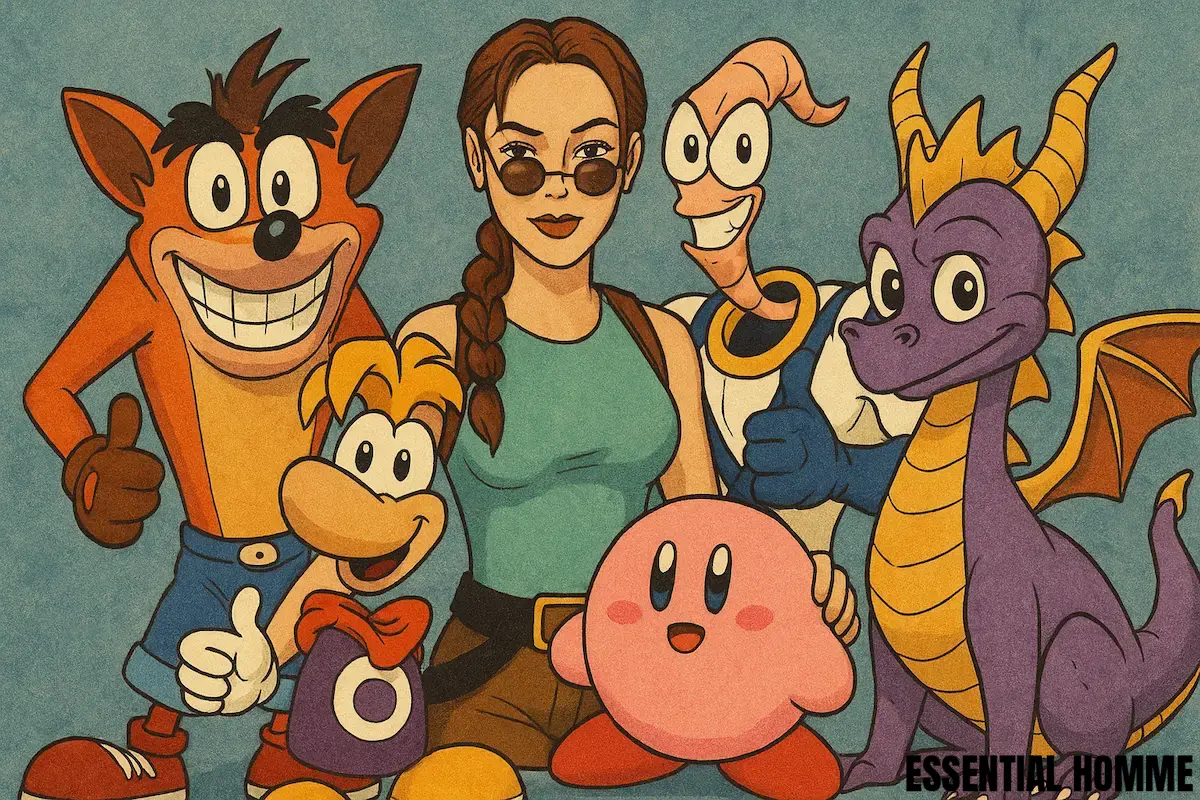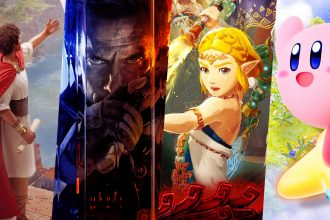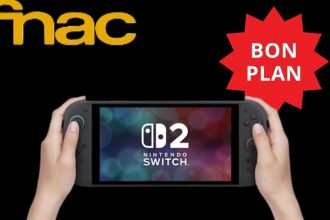The 90s saw the birth of a veritable mascot war. Sonic, Mario, Crash, Lara Croft… each symbolized a brand, a style and an era. This bubbling decade redefined the identity of video gamemoving from simple entertainment to an influential cultural industry. A look back at these video game superstars of the 90s who shaped the collective imagination and forever marked the history of gaming.

The Rise of Sonic and the Mascot Revolution
Sonic the Hedgehog is living proof. When it arrived on Mega Drive, Sega was not yet a video game giant. Mario largely dominated the market with his instantly recognizable silhouette. But Sonic brought something else: crazy speed, a disdainful look and an attitude that spoke to a new generation. He wasn’t nice. He wasn’t cute. He was cool. And this detail made all the difference.
Paul Glancey, a former CVG journalist, explains that Sonic had a huge impact on a young audience who found the character aspirational. Faced with Nintendo’s mustachioed plumber, Sonic brought this touch of attitude and modernity that appealed to players.
This success sparked a real frenzy. Publishers then increased their attempts to create their own mascot capable of competing with the already established giants. The market found itself flooded with anthropomorphic creatures with distinctive features.

The proliferation of animal mascots
The success of the blue hedgehog caused a rush. Suddenly, every studio wanted its own mascot. The platforms were then filled with hairy creatures with sometimes absurd characteristics. Bubsy had a flashy sense of humor and never stopped talking. Rocky Rodent sported a punk mane. Gex quoted television series all day long. Some projects even went as far as the absurd, like Wild Woody, an anthropomorphic pencil by Sega, an idea so strange that it became cult by default.

A global but unequal phenomenon
On Super Nintendo, Nintendo didn’t need to force it. Mario naturally took center stage. Other characters, like Yoshi or Donkey Kong, completed the universe without ever threatening the supremacy of the mustachioed plumber.
But elsewhere, the race for mascots was ruthless. On the Amiga, certain titles were ported to home consoles without any real care. The result? Poor conversions, dull graphics, poorly adapted animations… These versions lost impact compared to the originals, which denied their credibility.

Derivative licenses have also exploded. Characters were no longer content with saving virtual worlds. They sold chocolate bars, candies or sodas. James Pond was promoting Penguin biscuits. Zool extolled the merits of Chupa Chups. As for Cool Spot, he was literally a walking logo for the 7-Up brand. At the time, these partnerships seemed completely normal.
Integrated marketing was still in its infancy. No one was really offended to see a video game hero advertising a soft drink.
At the time, business arrangements that would seem crude today were commonplace.
Follow all the latest news from Essential Homme on Google Newson our whatsapp channelor receive directly in your mailbox with Feeder.

Mid-90s weariness
By the mid-90s, a certain exhaustion set in. The players had seen too many interchangeable mascots. Awesome Possum, Radical Rex, Aero the Acro-Bat, all wanted to shine, but few left a lasting impression. The formula was beginning to smell of repetition. Only an exceptional title could revive interest.
This is what Donkey Kong Country achieved thanks to revolutionary graphics for the time, created by Rare with pre-rendered 3D sprites. The burly gorilla, complete with a red bow tie, has become an icon in its own right, a far cry from its arcade ancestor.

The 3D era and the revival
That’s when the third dimension changed things. Crash Bandicoot, Spyro the dragon and Banjo-Kazooie benefited from a double advantage: new universes and technology that brought their characters to life like never before. Seeing a hero move freely in three-dimensional space was a unique experience. Even the old mascots have found a new lease of life. Donkey Kong, revisited in 3D, offered unforgettable sensations to those who discovered it for the first time.
Oddly enough, Sony has never made a mascot official. No character has been designated as the main face of the brand. However, Lara Croft, the heroine of Tomb Raider, has become one of the most powerful symbols of this era. Human, realistic, armed and determined, she proved that it was not necessary to be an anthropomorphic animal to captivate. It represented another path, more mature and more direct.
No face, but millions of followers
The case of Pokémon is special. The series is not based on a single character. If Pikachu is often highlighted, dozens of other creatures, Charmander, Snorlax, Squirtle, arouse equal, or even greater, loyalty among fans.
Here, the very concept of mascot evolves. It is no longer a question of a single leader, but of a rich and varied ensemble. Unlike many forgotten heroes, these monsters have survived the decades without weakening.

Contrasting legacies
Today, console manufacturers no longer feel the need to have an official mascot. The industry has matured and marketing strategies have diversified. However, certain characters cross the decades with their popularity intact.
Sonic continues to thrive, with recent Hollywood successes attesting to its cultural significance. Kirby, for his part, has worked tirelessly since his debut on Game Boy, exploring every possible genre. Crash Bandicoot benefited from a remaster of its original trilogy and a new sequel released in 2020.
Other mascots have had less glorious fates. Rayman hasn’t appeared since Rayman Legends in 2013. Spyro wandered in limbo before returning with a remake of his trilogy. Earthworm Jim is hypothetically awaiting a return to Amico, which could mark his rebirth.

Nostalgia as a driving force?
The craze for spiritual successors, like Yooka-Laylee, and the nostalgic success of Sonic Mania or the Crash Bandicoot N. Sane Trilogy indicate that the survivors of the 90s are here to stay. Players who grew up with these characters pass on their passion to new generations.
Daley Eve Johnson, designer at Playtonic Games, explains that this resurgence is part of a general shift towards feel-good games. Gamers are looking for relaxed and cute experiences after stressing themselves out with intense and dark titles.
A remarkable generation
The video game superstars of the 90s have shaped modern gaming more than we realize. They established marketing codes, pushed the boundaries of merchandising and created universes that still resonate today. This period remains a reference for understanding how a character can transcend their original medium.
The legacy of this era can be measured by the immediate recognition of Sonic, Mario or Crash by several generations of players. These icons have accompanied technological evolution, from 16-bit to polygonal 3D, thus proving their capacity for adaptation.





